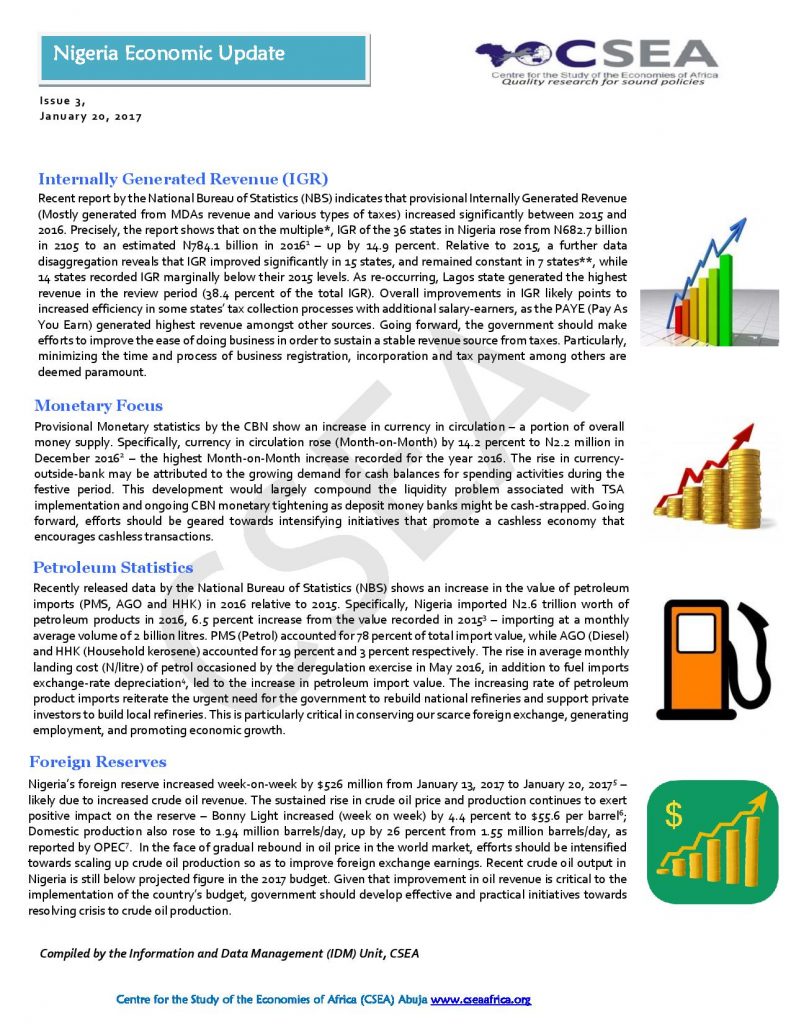Macroeconomic Report & Economic Updates

January 27, 2017
Nigeria Economic Update (Issue 3)
Provisional Monetary
statistics by the CBN show an increase in currency in circulation a portion
of overall money supply. Specifically, currency in circulation rose
(Month-on-Month) by 14.2 percent to N2.2 million in December 2016
the highest Month-on-Month increase recorded for the year 2016. The rise in currency-
outside-bank may be attributed to the growing demand for cash balances for
spending activities during the festive period. This development would largely compound
the liquidity problem associated with TSA implementation and ongoing CBN
monetary tightening as deposit money banks might be cash-strapped. Going
forward, efforts should be geared towards intensifying initiatives that promote
a cashless economy that encourages cashless transactions.
